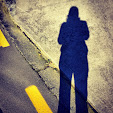My final project for CCDN371 focuses on the theme of imaging because the creation and meaning of images in art, film and photography is the area I have gravitated towards during my studies. My work in the previous projects has led me to investigate the use of images and the role magazines play in image storage - especially since digital magazines have come into being.
My point of departure for this project was a professed avowal of my love for magazines. It informed my process throughout the past two projects. I appreciate that they can inform in an entertaining way, at the same time enhancing one’s surroundings. They are a means for collecting images. They also act as a storage place for ideas. (Albeit one that is not curated).
Even though digital magazines have been successfully integrated into the magazines market, we know that the analogue version of magazines still holds a strong appeal especially for those who enjoy tactile experiences. There is also a risk of losing digital magazines as recently discussed in the media after comments from Google VP, Vint Cerf.
After feedback from project three, I was able to narrow down my key objectives to three main criteria. The new object needed to:
* deliver a more sensual experience that appealed to more than one sense
* introduce a degree of curatorship into the user experience of magazine reading and collecting
* incorporate the existing ideas of collecting and keeping images into a more restrained practice. In response to the desire to simplify my existence.
The outcome is a self-made book that retains my original branding as a succinct way of expressing its purpose. These are the magazine images and articles which are designated ‘keep’.
The concept was to elevate the status of the magazine to something elegant and covetable and personal. Something the user would never dispose of - will want to keep.
This has been achieved visually and through touch. As well as good craft.
 |
| © luckiestwomanalive 2014 |
 |
| © luckiestwomanalive 2014 |
 |
| © luckiestwomanalive 2014 |
Functionality
If this was in some way commercialised, it would be important that the user be able to engage in the assemblage of the final product with a degree of ease so that the experience should be pleasurable. It is a modular object – designed to build from components – A4 sheets attach to A3 sheets combined into signatures of whatever is the desired size. Signatures then combine to form the final magazine which inserts into the cover and forms a book. Each signature could represent a genre of magazine or a period of time (as is the case in my example).
Materials
Velum feels pleasant to the touch however it is semi transparent so it is important to provide backing to each page, so there is a protective divider between each page – reminiscent of a photograph album. I liked the way an old idea was reincorporated into an object built to deal with a new problem. Each is sized A3, The printed pages are sized A4. The end book is neither and makes for an unusual size that contributes to its unique aesthetic. But all the components are standard sizes that are adapted to the size of the book.
Each signature is attached to the spine of the outer cover which is covered in soft, natural linen. The brand is embroidered/hand printed onto the cover. In this instance I used waxed thread that was passed down to me by my grandmother who died in 1983 which has further elevated the object’s meaning to me.
Other functions
Pinterest images and personal images could be added.What I have learnt:
Adding importance to the image increases its importance to the user. This is how my design might change the perspective of users. In addition, it is the process that becomes important. Immersing myself in the process of crafting a safe haven for my magazine images was pleasurable and felt worthwhile.
Finally I have realised that by remediating digital images into material objects, I am reengaging with the question of the purpose of photography which lent a sense of meaning to my design.


No comments:
Post a Comment